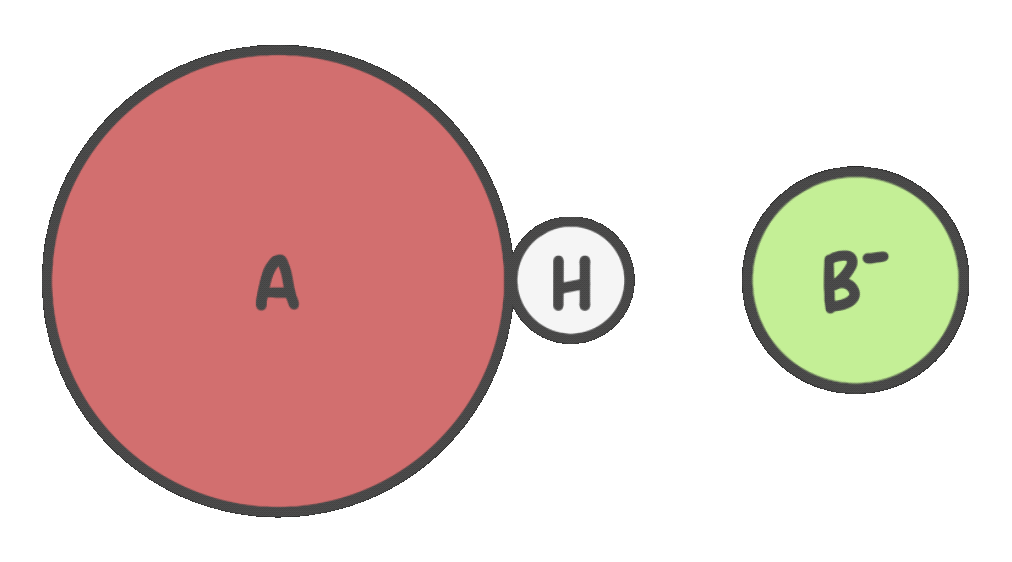Big picture:
Every acid-base reaction can be written as:

HA + B– ⇌ A–+ HB
Here, HA is the acid that donates a proton, and HB is the conjugate acid formed after base B- accepts that proton.
Our goal is to use the pKa values of the acids on both sides (HA and HB) to figure out which direction the reaction favors.
Then, we’ll quantify that balance with K, the equilibrium constant.
Step 1: Identify the acid on each side of the reaction
Start by pinpointing the acid on each side of the reaction:
Left side: The proton donor (HA)
Right side: The conjugate acid formed after the base gains a proton (HB)

Step 2: Look up the pKa values for these acids
Next, grab the pKa values of both acids:

The equilibrium will favor the side with the weaker acid, which has the higher pKa.
So here, methylammonium is the weaker acid, meaning the equilibrium shifts toward the products.
Step 3: Calculate K using the correct formula
Now plug the values into this key equation:
K = 10−ΔpKa = 10pKaleft − pKaright
ΔpKa = 4.76 – 10.66 = -5.90
K = 10-(-5.90) = 105.90 ≈ 7.94 × 105
Step 4: Interpret the value of K
Now that we’ve got K, here’s how to interpret it:
- K > 1 → Products are favored
- K < 1 → Reactants are favored
- K ≈ 1 → Reactions lies near equilibrium
So the size of K tells us how complete the acid-base reaction is.
In our example, since K ≈ 7.94 × 105, the reaction strongly favors the products, just as we predicted from comparing pKa values.
The weaker acid (methylammonium) ends up on the product side, confirming that the proton transfer is favorable.